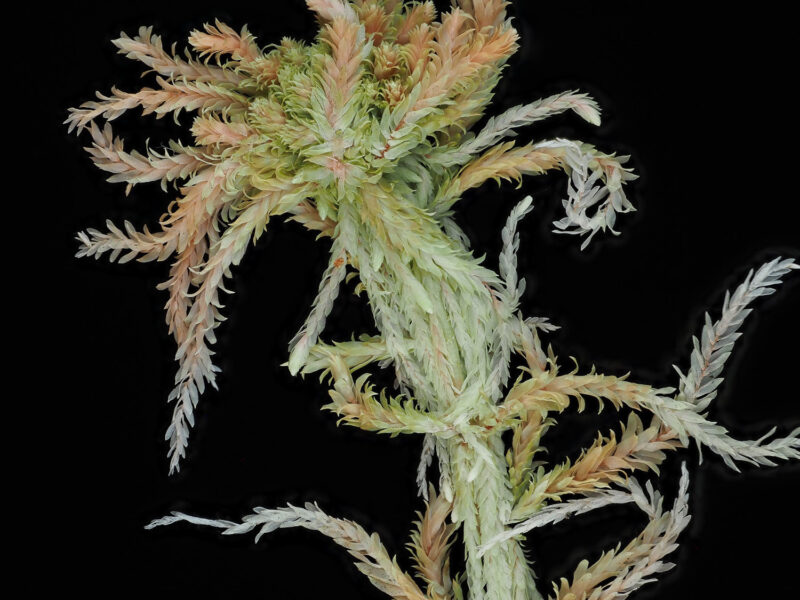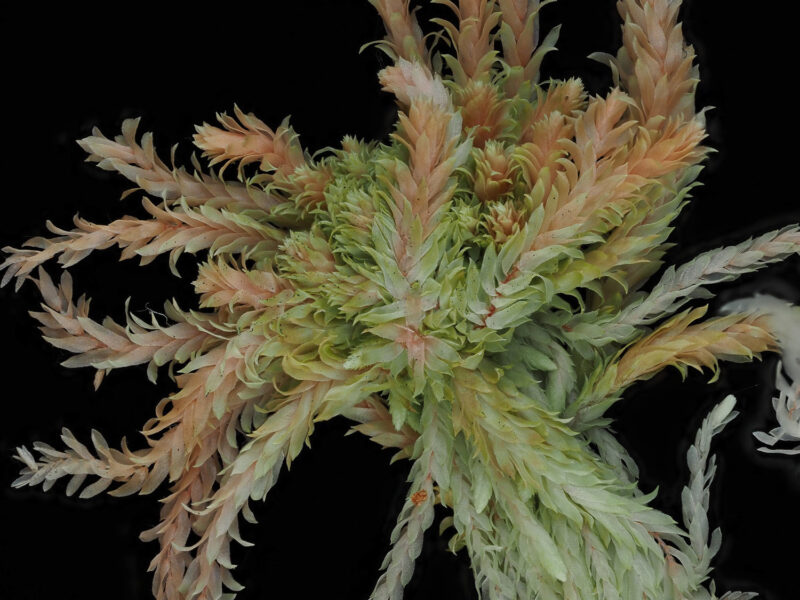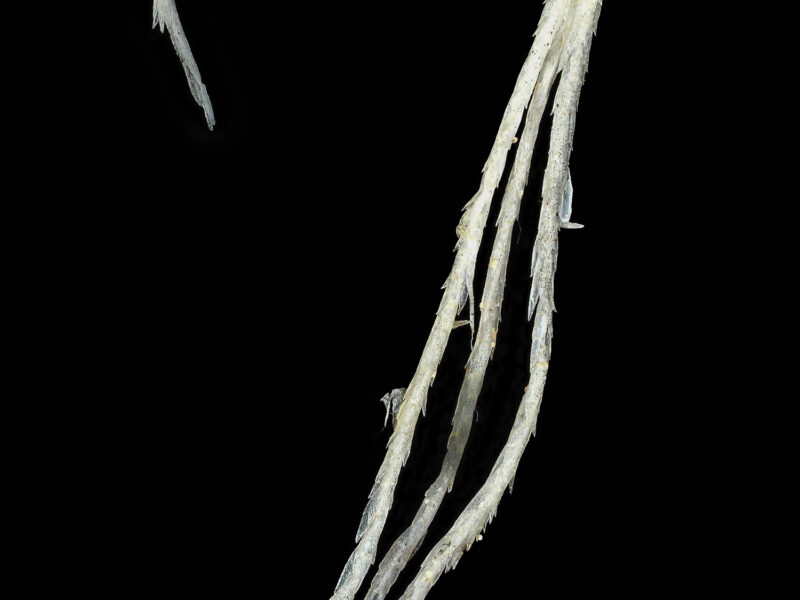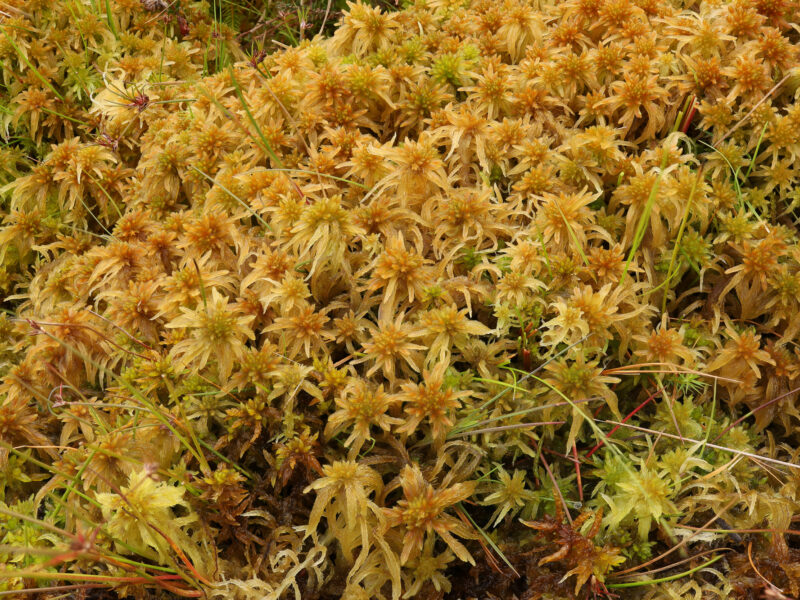Identification notes
This is one of the recurvum group and needs care to differentiate it from closely related species. It can be elusive and is usually found with other Sphagna in flushes, mires and bogs where there is some mineral content to the water. It can tolerate light shade and sometimes it grows at the edge of woodland or amongst scrub, which may also indicate groundwater enrichment.
The characteristic pompom capitulae when present will immediately make one think of S.angustifolium and confirmatory characters can be sought. The relatively delicate nature of the plant and the green colour (sometimes yellowish/brownish) together with the hanging triangular stem leaves places the plant in section Cuspidata. It can appear very similar to Sphagnum fallax but careful examination of several stem leaves with a hand lens will show that although the leaves are sometimes slightly cucullate the inrolled pinched apex seen in S.fallax is lacking. There is then the question of could it be its sister species S.flexuosum. They both have triangular stem leaves, and although S.flexuosum tends to have a more fringed apex in practice they can look very similar.
They key feature is the nature of the differentiation of the spreading and hanging branches. It is possible with care in the field, using a sharp pencil or forceps, to tease out the branches from a single capitulum and see what is happening. In S.angustifolium the pendent branches are much longer than the spreading ones, and are weak and delicate. In S.flexuosum they tend to be roughly the same size.
Those of us who are not Sphagnum experts will need to collect material to examine under the dissecting microscope. It will also then be possible to check that the branch leaves are recurved when dry, which is a useful confirmatory character that differentiates it from S.flexuosum.
Read the Field Guide account
















